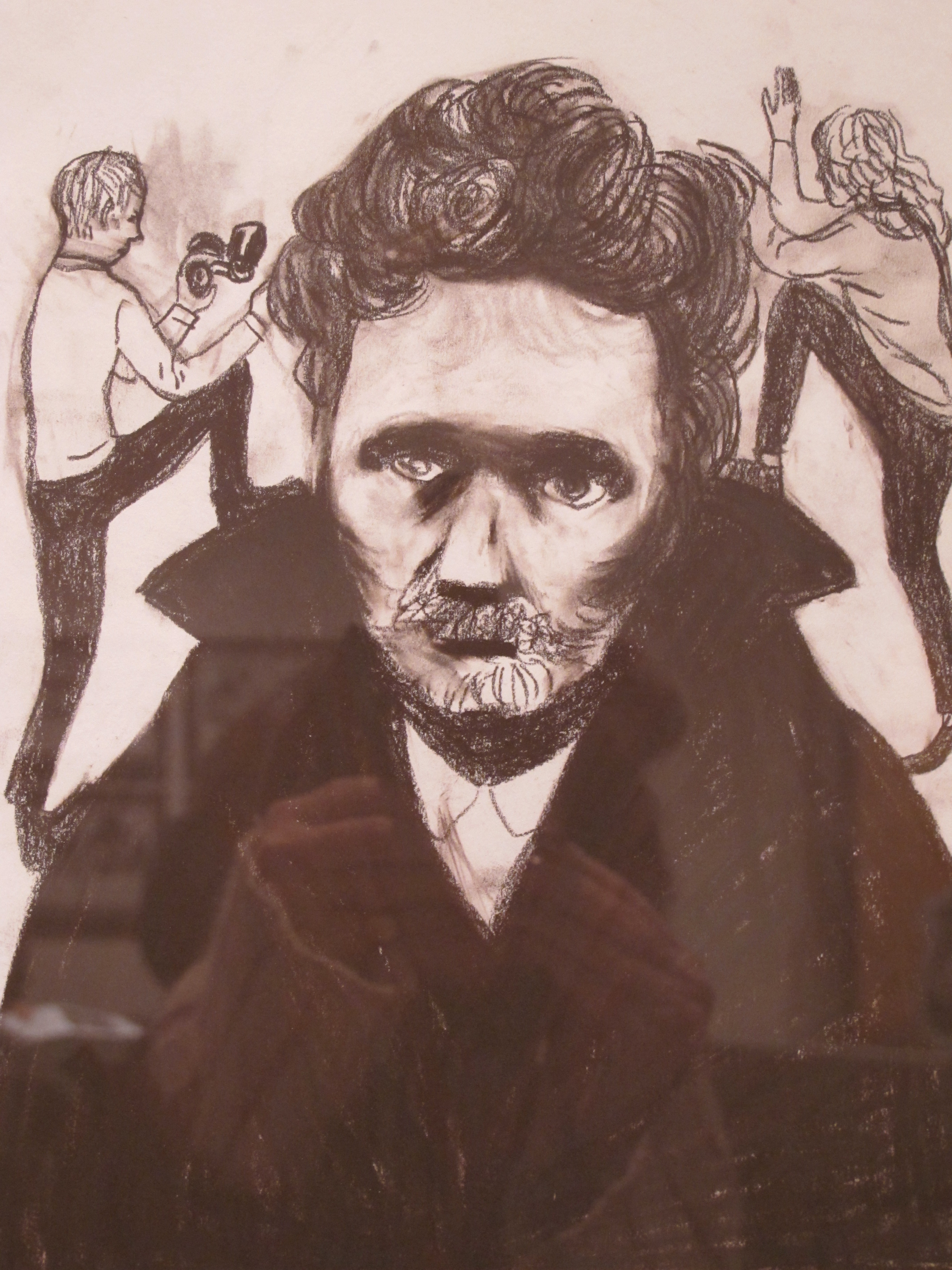August Strindberg: the famous Swedish author is celebrated this year 2012 as it was one hundred years since he passed away. At the Swedish Institute in Paris, Swedish speaking pupils read aloud from his plays and an exhibition about him is shown. Linda Jarvin – the Swedish headmistress at Parsons school in Paris – houses Swedish students who are interested in art. The Swedish/French exchange in the art departmenet seems to be at its best.
Lycée Buffon:
“The study of the Swedish language started here already in 1945,” says Gabrielle Rozsaffy who has been teaching Swedish for almost twenty years now.
Even my sons went to the Lycée Buffon, as is the school’s name, to polish up their Swedish grammar and read Swedish literature. Besides the language, Gabrielle initiates them in current news that she picks up from Swedish newspapers but she also includes lessons in history and civic education. “I’m a bridge between Sweden and France for my pupils,” she says.
Each year about 200 pupils take Swedish as an option for their final school exams and that means many important points to be gained. “So far I only teach at the secondary level but more and more students want to start earlier,” she says. Gabrielle also prepares her pupils for the exam needed to be able to continue their higher studies in Sweden. “About half of my students continue their studies in Sweden”. Apparently it’s not only Swedish children who are interested in our language but more and more French kids as well. The recently appointed director to the Swedish Institute, Mats Widbom, confirms the trend of an increase in Frenchmen coming to the Institute to learn Swedish.
Strindberg shown as a cartoon:
After having viewed the rather peculiar exhibition of one of our most serious authors as comic strips, I listen to Gabrielle’s pupils reciting Strindberg’s plays in an excellent Swedish in one of the inner rooms at the SI. More than one hour and many applauses later, the happy students linguer on. A young French student present tells me that “I always learn something when I come here. I didn’t know Strindberg before.” Comic strips are very appreciated in France amongst the young as well as the adults.
Parsons in Paris
I take the metro to Paris’ left side and have to walk for a while before I reach a rather insignificant door that proves to be the entrance to this prestigious school. On my way there, I already hear English spoken. It’s the official language in this otherwise international school. “It’s a four year degree,” Linda tells me as we walk around the rooms where students are photographing, painting, designing clothes…
I realize that the classes are small. “Despite that we have many diversified inspirations. We’re all from different cultures,” a pleased student tells me. Linda Jarvin, a Swedish woman brought up in France, started here in this former American art-school as a headmistress in June 2011. Her itinerary is quite different though. Linda has a PhD in cognitive psychology from Paris and moved afterwards to the USA. There she contined her post-phd and researched in Yale and then in Boston about the brain’s development. Her field of interest is to try to help teachers become more efficient in their education.
Linda Jarvin Students at Parsons
A different way of teaching than the classical one. That would be needed in the French schools where learning by heart is the norm, I thought. “The idea is that the teachers shall think more about what the students can learn rather than what they should have the time to teach during a term,” she says, smiling. That sounds very wise to me but not so easy, I imagine, to implement in such a culturally diversified environment. “We currently have students from 48 different countries in our school. But the Swedes are a dominating group this year,” she says.
The school is independent of the one in New York since a few years back but the price is still in American rather than European standard. I thus wonder how Swedish students can afford to study there. “Since Swedish students are allowed to take along their loans abroad, they have increased in number. We also help them with scholarships and jobs.” Linda explains that they have a good chance in the job-market once their studies have been completed successfully, as most of the teachers have their own businesses and contacts to help their students.
Strindberg as a series, French students learning Swedish, Swedes moving to Paris to attend an interantional art-school… today’s pupils are quite international. Globalization has several positive sides whatever one might say and I’m sure we haven’t seen them all yet. Just wait until all those students hit the job-market!
Anne Edelstam, Paris








